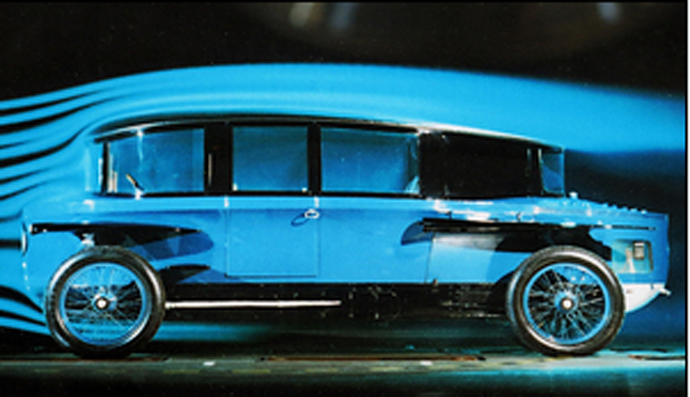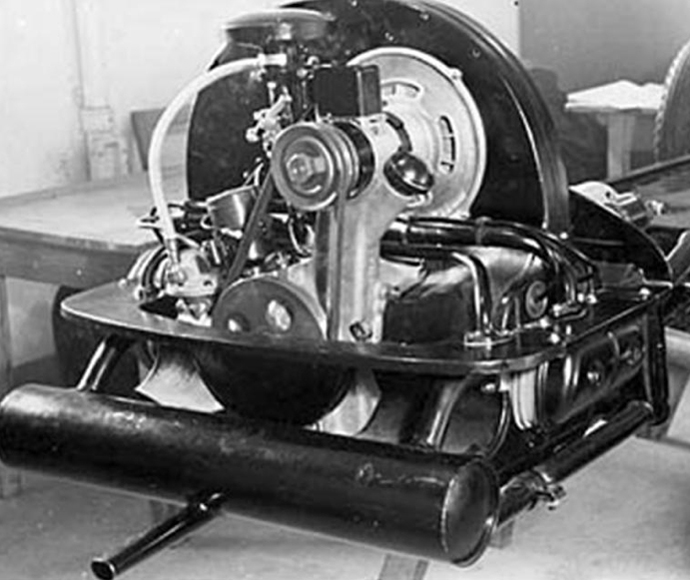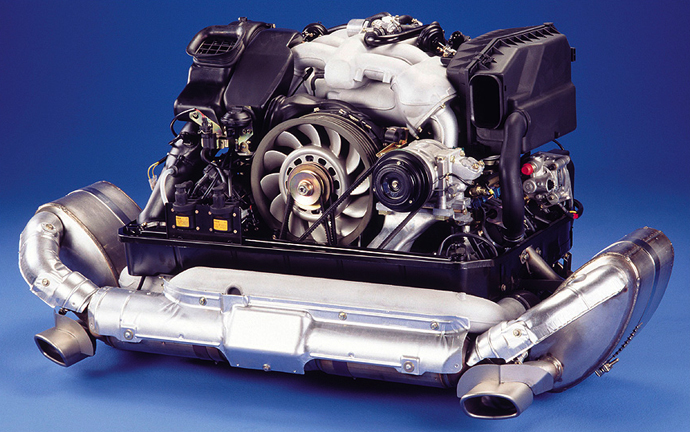It’s difficult but fascinating to unravel the very beginnings of the VW air-cooled lump and some interesting powerplants were investigated before the classic and instantly recognisible flat-four configuration was finally decided upon. Being at the heart of our love affair with air-cooled dubs, we reckon how the engine first came into existence deserved a bit more investigation…
Incredibly, Ferdinand Porsche was responsible for designing a four-cylinder ‘twisted’ boxer engine for Austro-Daimler as long ago as 1912. The idea back then was centred on streamlining as a way of saving power.
There’s no doubt Porsche was inspired by the mega wind-cheating ‘teardrop’ shaped car built by Rumpler-Berlin in 1921 (below) and his continued development of air-cooled aero engines that were essentially slow turning and reliable, with good torque at low revs convinced him that this type of engine would be ideal to drive a low-drag car, given clear roads.

The creation of the autobahn road system in the early 1930s fulfilled the latter requirement, while political motivation to produce a ‘car for the people’ gave him the impetus to push his plans forward.
Now, Porsche had already designed a 1500cc horizontally opposed flat-four for NSU back in 1933, but his real passion was for the technology of two-stroke. He loved the simplicity and low down torque it offered. In the space of 20 months, no fewer than a dozen different configurations were tested, including a boxer-twin, a four-cylinder two-stroke in which two of the cylinders acted as pumps and a twin-cylinder single-sleeve-valve unit with a complex cam and torsion bar arrangement to actuate the sleeve connecting rods. It’s reported that Porsche’s real favourite was a vertical double-twin two-stroke similar to twin-piston units seen on Austrian Puch motorcycles. As an interesting footnote, Steyr-Puch went on to build a two-cylinder air-cooled unit for its lightweight four-wheel drive 643cc military Haflinger vehicle (below), which bears an uncanny resemblance to the VW engine.


Development of these weird and whacky creations came to a halt in 1936 in favour of the now classic air-cooled four, developed under Porsche’s direction by Karl Rabe and Xavier Reimspiess (below). Cylinder dimensions of 70x64mm gave a capacity of 985cc but only a limited number of these units were built (by Daimler Benz) to power Nazi party publicity cars. However the 75x64mm engine was soon developed for the military Kübelwagen prior to the outbreak of war, and because only the tooling for these engines survived the conflict, these were the ones used for post-war VWs.

As we all know, over the years the venerable air-cooled engine has changed only in detail. Short overall length, light weight and a position in the car that was as low as possible and over the driving wheels were always the key features – hence the use of a magnesium crankcase and light alloy cylinder heads, with the opposed cylinder layout helping to keep length to a minimum.
For many, the story ends with the Porsche 993 engine (below) which epitomises just how far the original air-cooled concept could be taken, albeit aided by a couple of extra cylinders. Needless to say, however, with proper maintenance and a bit of thought when it comes to modifications, the original VW engine remains a totally talented and rugged piece of masterpiece engineering that will go on forever given the right circumstances.

Obviously Porsche’s love affair with two-stroke technology was never fulfilled; reportedly he was dissatisfied with his decision to go with the four-cylinder and promised to have it replaced by a two-stroke engine no later than 1944. Thankfully other things got in the way…
Ian
The opinions expressed here are the personal opinions of the author and do not necessarily represent the views and opinions of VW Heritage


any good condition haflinger 650cc engine?
thank you.
fwdco@yahoo.com
I’m looking for halifinger 643 cc flat twin engine.
I just got halifinger without engine,
Anyone can help me?
hiroshi